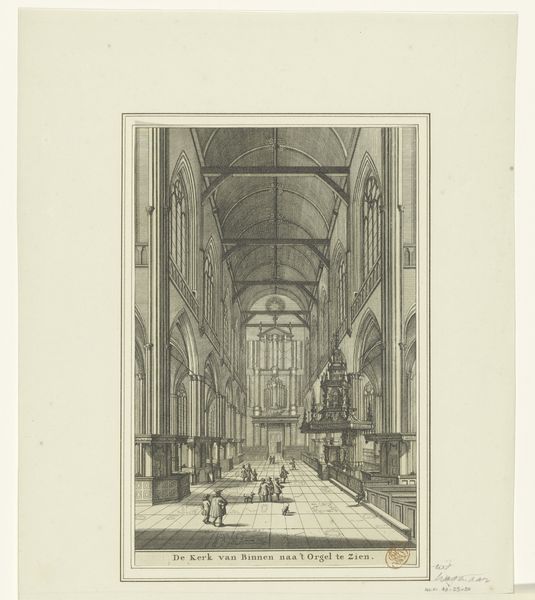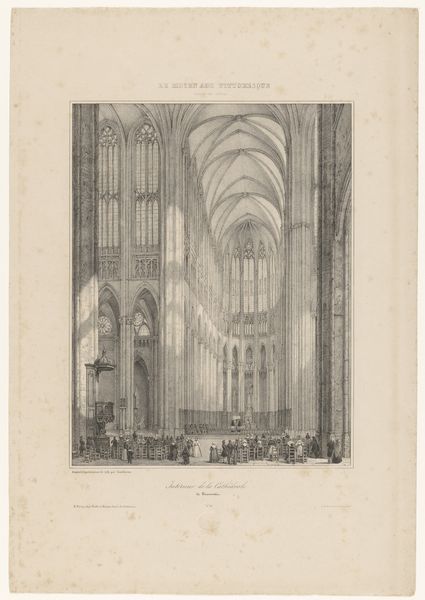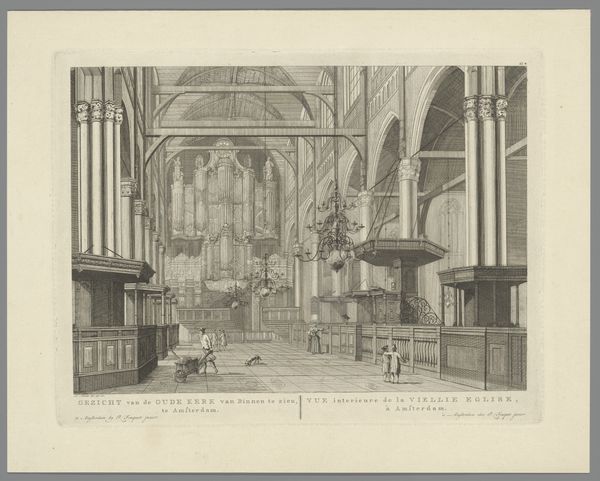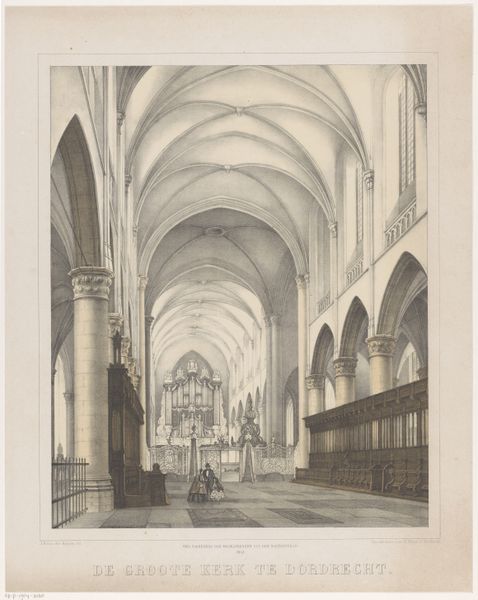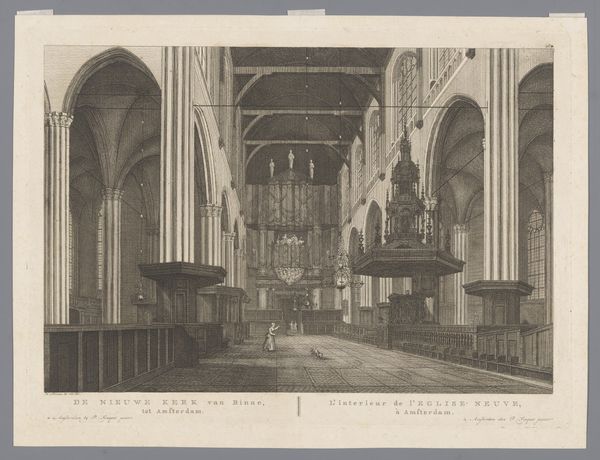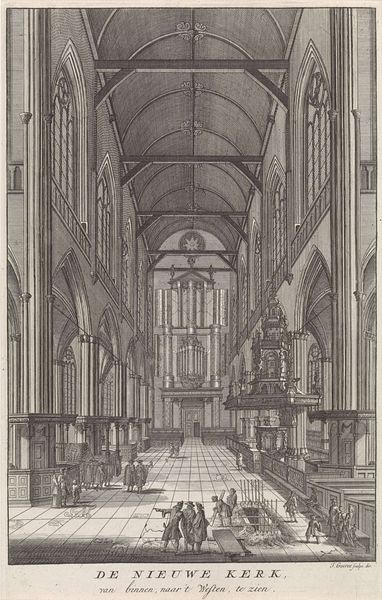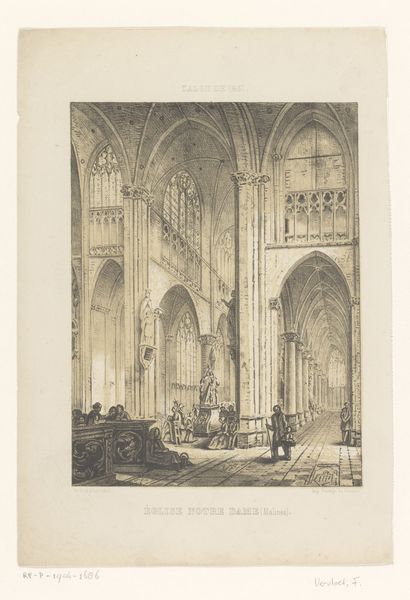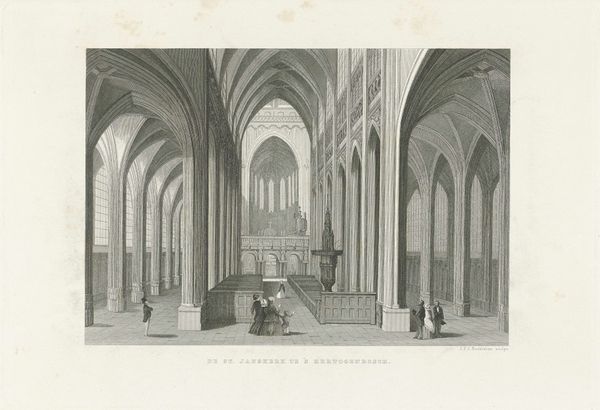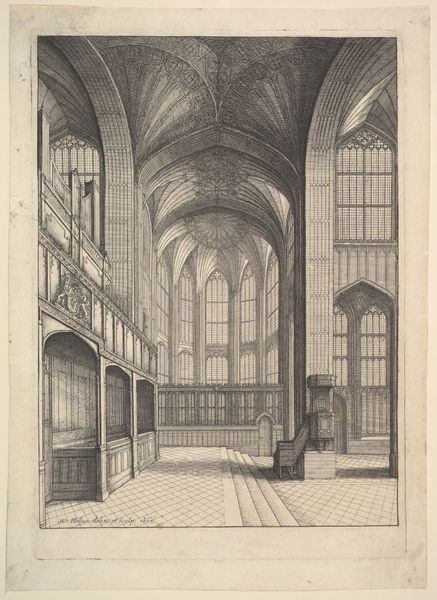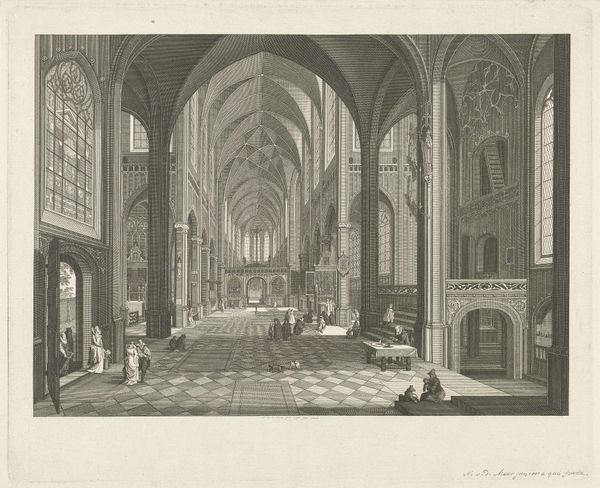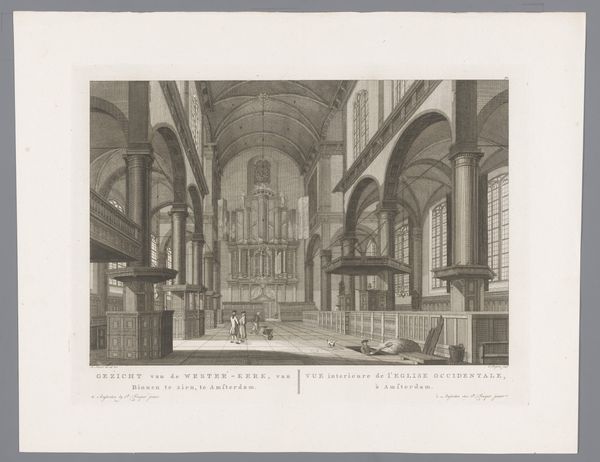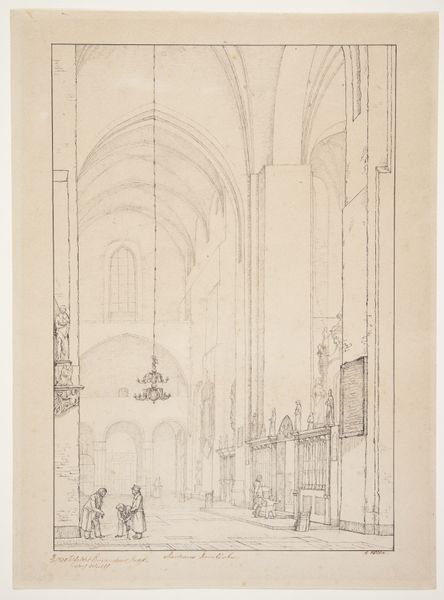
drawing, print, ink, engraving
#
drawing
#
dutch-golden-age
# print
#
landscape
#
ink
#
romanticism
#
engraving
#
realism
Dimensions: height 244 mm, width 141 mm
Copyright: Rijks Museum: Open Domain
Curator: This drawing, crafted with ink, showcases "Interieur van Oude en Nieuwe Kerk te Amsterdam" by Johannes Hilverdink, circa 1844. It’s housed right here at the Rijksmuseum. What’s your initial impression? Editor: It feels vast and echoing, almost…clinical? Despite the architectural grandeur, the depiction seems detached, observed rather than experienced. There is a starkness to the lines and lack of warmth. Curator: It’s interesting you say “clinical." Hilverdink presents us with two distinct interior views in this print – The Old and New Churches of Amsterdam. In terms of reception, what were the social functions of depicting sacred spaces? Editor: Well, representations of religious institutions have historically served numerous ideological purposes, from reinforcing social hierarchies to legitimizing political power. Depictions like this would subtly reaffirm the Church's presence and influence within Amsterdam's evolving urban fabric. Considering the print medium itself, reproduction allowed broader circulation of a constructed public image. Curator: Precisely. The engraving technique employed democratized access to such images. But beyond structural power, how might the architecture and its representation reflect broader issues concerning gender, perhaps through access or exclusion? Editor: That's a critical lens to apply. While superficially egalitarian, these spaces historically limited women's agency, both physically and symbolically. Representations can reproduce those limitations, reinforcing the patriarchal narratives inscribed within the architecture. Hilverdink's depiction normalizes that structure; by portraying these grand spaces from particular perspectives, it’s almost framing an experience of access – which we need to read critically, given the social structures of that time. Curator: Absolutely. And given the Dutch Golden Age influences and burgeoning realism of the time, that tension between realistic depiction and ideological reinforcement becomes especially palpable, don't you think? Editor: Without a doubt. The artistic choices reflect not just observation, but also participation in constructing the church’s public identity and its impact. Hilverdink captured an aesthetic and also a cultural position. Curator: Ultimately, it highlights the intertwined nature of art, social history, and representational politics. Thank you. Editor: It enriches our understanding, seeing this art both in and outside its own time. Thank you.
Comments
No comments
Be the first to comment and join the conversation on the ultimate creative platform.
